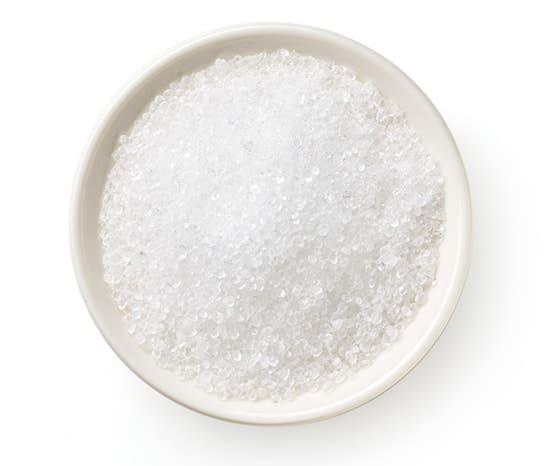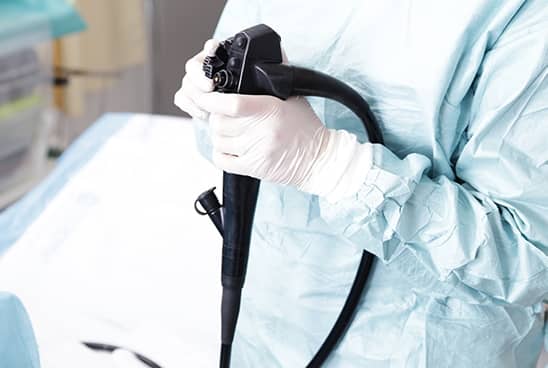Managing Your Medical Tests
Other than hypertension, patients with primary aldosteronism usually experience diffuse symptoms which are addressed in isolation by numerous specialists. Not only do patients sometimes contend with dismissal, they are faced with fragmented and uncoordinated care. It is not unusual for them to have to request diagnosis and suggest avenues to mitigate the collateral damages of excess aldosterone.
Tests are central to the management of medical issues, and are often a source of confusion: their name and the way results are reported vary across laboratories which use different methods and reagents to analyze samples. The Foundation aims at relaying lived experiences, and at providing patients with educational tools to help them navigate the clinical landscape and avoid pitfalls others encountered before them. Our list is by no means exhaustive, and we encourage you to share experiences that would benefit patients and the primary aldosteronism community.
Normal Range
Tests usually display a lower and upper limit called “reference range” (e.g., potassium has a reference range between 3.5 and 5.0 mEq/L). Sometimes the reference is a maximum or a minimum (e.g., in a lipid panel, HDL cholesterol will be expected to be above a minimum value).
As long as results are within range, they are considered “normal.” Our bodies are in constant state of flux, and unless results are out of the norm, up and down variations are normal. Otherwise, medical decisions would be based on noise rather than meaningful evidence.
While this is obvious with diseases such as pneumonia or cancer, it is a lot less clear-cut with chronic diseases for which test results tend to evolve more slowly over time. The introduction of electronic health records in medical practice makes it easier to track patients’ data over time. However, patients’ ability to track their own data also makes a big difference.
Normalcy only exists in relationship to an individual – what is normal for one person may be unusual for another. No matter how well medical data are tracked, unless clinicians know what is normal for their patients, diseases like hyperaldosteronism will remain under-diagnosed. The more knowledgeable they are, the better patients can flag medical issues to their physicians.
A Common PA Story
Until 2010, Jane Doe was overall healthy. During the next 6 years, she started to develop a lot of the symptoms described on Do I have PA? Potassium and sodium started to trend in the wrong direction but neither her PCP nor the myriad of specialists she was referred to ever connected the dots.
Nothing was ever found above or below range, and everything was considered “normal” until she suffered hypertensive crises, and was referred to an internist for urgent medical assessment including investigation of endocrine causes of hypertension. Years of continuous decline had passed before she was diagnosed with primary aldosteronism.

Units of Measurement
Test results display the value and the unit of the measure. Conventional units (e.g. ng/dL) are mostly used in the US. Système International (SI) units (e.g. pmol/L) are used in most countries other than the US.
Sometimes patients have to seek care in different countries, and sometimes test reports display a mix of units. Tables of conversion factors can be used to convert units. Online converters such as UnitsLab are also helpful to convert one unit to the other.
Converting test results into percentages can also help compare values expressed in different units. If the result of test X is 1.11 on a range of 0.75 to 1.54, the formula to convert the result into % is: (1.11 – 0.75) / (1.54 – 0.75) = 0.36/0.79 = 0.46. In this example, the result of test X falls below the middle of the range at 46%.
Serum Potassium
Excess and lack of potassium have fatal consequences, but because hyperkalemia is more lethal faster, physicians are usually more on the alert for it than hypokalemia. Based on how the test is performed, potassium results can be falsely elevated. Methods used by laboratories to analyze blood samples are beyond our control, but patients should always make sure phlebotomists draw their blood appropriately:
- Tourniquets alter water balance, and should not be applied for periods longer than one minute;
- Fist clenching causes local release of potassium from muscles in the forearm, and should be avoided;
- Traumatic probing and venipuncture are also known to falsely elevate results and should be taken into consideration if they occur.

Molecular Weight and mEq
To compare the results of the urine test expressed in mmol with food intake expressed in mg, values must be converted using the molecular weight of sodium (23) and potassium (39):
- A urine sodium of 65 mmol x 23 = 1,495 mg of dietary sodium.
- A urine potassium of 120 mmol x 39 = 4,700 mg of potassium intake.
Some laboratories cannot measure sodium below a certain threshold (e.g. below 20 mmol/L).
Milliequivalent (mEq) is another unit of measure often used for electrolytes. 1 mEq is represented by 23 mg of sodium and 39 mg of potassium. Dosage of potassium supplements is often expressed in mEq.
Urine Tests
The amount of sodium and potassium ingested through diet is excreted in the urine. Measuring urine output is particularly useful in two instances:
- During diagnosis, to detect false-negative ARRs caused by dietary sodium restriction since low sodium intake increases renin; and
- On top of medication regimen, as part of disease management to calibrate dietary sodium and potassium until patients reach adequate balance.
The gold standard is the 24hr urine test. Using the container provided by their laboratory, patients start collecting their urine with the 2nd voiding of the day. They take note of their dietary sodium and potassium intake, and continue collecting their urine up until the next morning to include the first voiding of that day.
For some laboratories, the container must be kept refrigerated, and the time the collection started and ended must be written on the container prior to returning it to the laboratory.
Drug-induced Hypertension
Sodium is insidiously present in most of what we ingest on a daily basis. Even small amounts can add up, and at the end of the day, exceed what patients with primary aldosteronism can tolerate.
A lot of commonly prescribed and over-the-counter medicines contain sodium. Patients with primary aldosteronism should always exercise caution and inquire about the sodium content of their medicines. Even something as common as a saline nasal spray or mouth rinse with salt water is not innocuous when one has hyperaldosteronism. Common medications containing significant amounts of sodium include Gaviscon and Alka-Seltzer Effervescent. Medications such as bile acid sequestrants are known to increase blood pressure. Others such as prokinetics actually increase aldosterone since they are serotonin agonists.
Because there is limited awareness of primary aldosteronism among clinicians, caution should always be exercised when starting a new drug regimen. This applies equally to surgery. In the US, fluids given during the intraoperative period usually contain 9 g of salt per liter. Patients with primary aldosteronism should request Ringer’s Lactate in lieu of regular saline, and should make sure potassium supplementation will be provided until they can resume their normal diet.


Colonoscopies
In the US, screening colonoscopies are recommended beginning at age 50. Preparing for the procedure is another challenging road to travel for patients with primary aldosteronism. Of the most common types of preparations, one involves high volumes of fluids (e.g., GoLytely) which are incompatible with an already high blood volume. Low volume preparations such as MoviPrep are therefore considered safer.
Preparations contain a significant amount of sodium, but since most of it is not absorbed, it is not considered harmful. Preparations also contain potassium, but in quantities by far insufficient when one has primary aldosteronism. Not only should patients supplement during the preparation, but their potassium level should be monitored prior to and after the procedure. Patients who are concerned about undergoing preparation without medical supervision should discuss the option of an overnight hospital stay with their physician.
References
- Asirvatham, J. R., Moses, V., & Bjornson, L. (2013). Errors in potassium measurement: a laboratory perspective for the clinician. North American Journal of Medical Sciences, 5(4), 255-259.
- Gambino, R., Sanfilippo, M., & Lazcano, L. (2009). Pseudohyperkalaemia from finger flexion during venepuncture masks true hypokalaemia. Annals of Clinical Biochemistry, 46(2),177-177.
- Don, B. R., Sebastian, A., Cheitlin, M., Christiansen, M., & Schambelan, M. (1990). Pseudohyperkalemia caused by fist clenching during phlebotomy. New England Journal of Medicine, 322(18), 1290-1292.
- Baudrand, R., Guarda, F. J., Torrey, J., Williams, G., & Vaidya, A. (2016). Dietary sodium restriction increases the risk of misinterpreting mild cases of primary aldosteronism. The Journal of Clinical Endocrinology & Metabolism, 101(11), 3989-3996.
- Hookey, L., Bertiger, G., Lee Johnson, K., Ayala, J., Seifu, Y., & Brogadir, S. P. (2019). Efficacy and safety of a ready-to-drink bowel preparation for colonoscopy: a randomized, controlled, non-inferiority trial. Therapeutic Advances in Gastroenterology, 12, 1-13.

